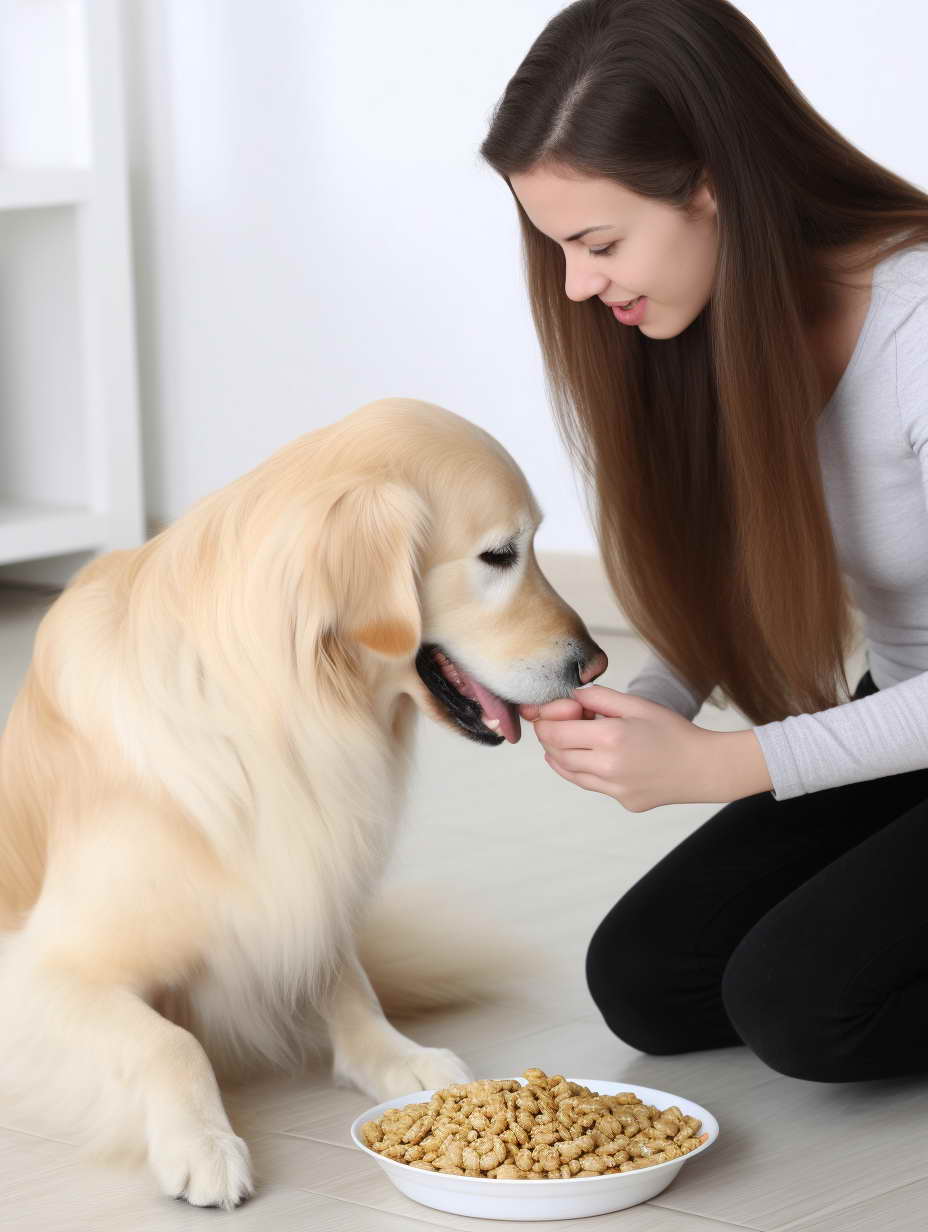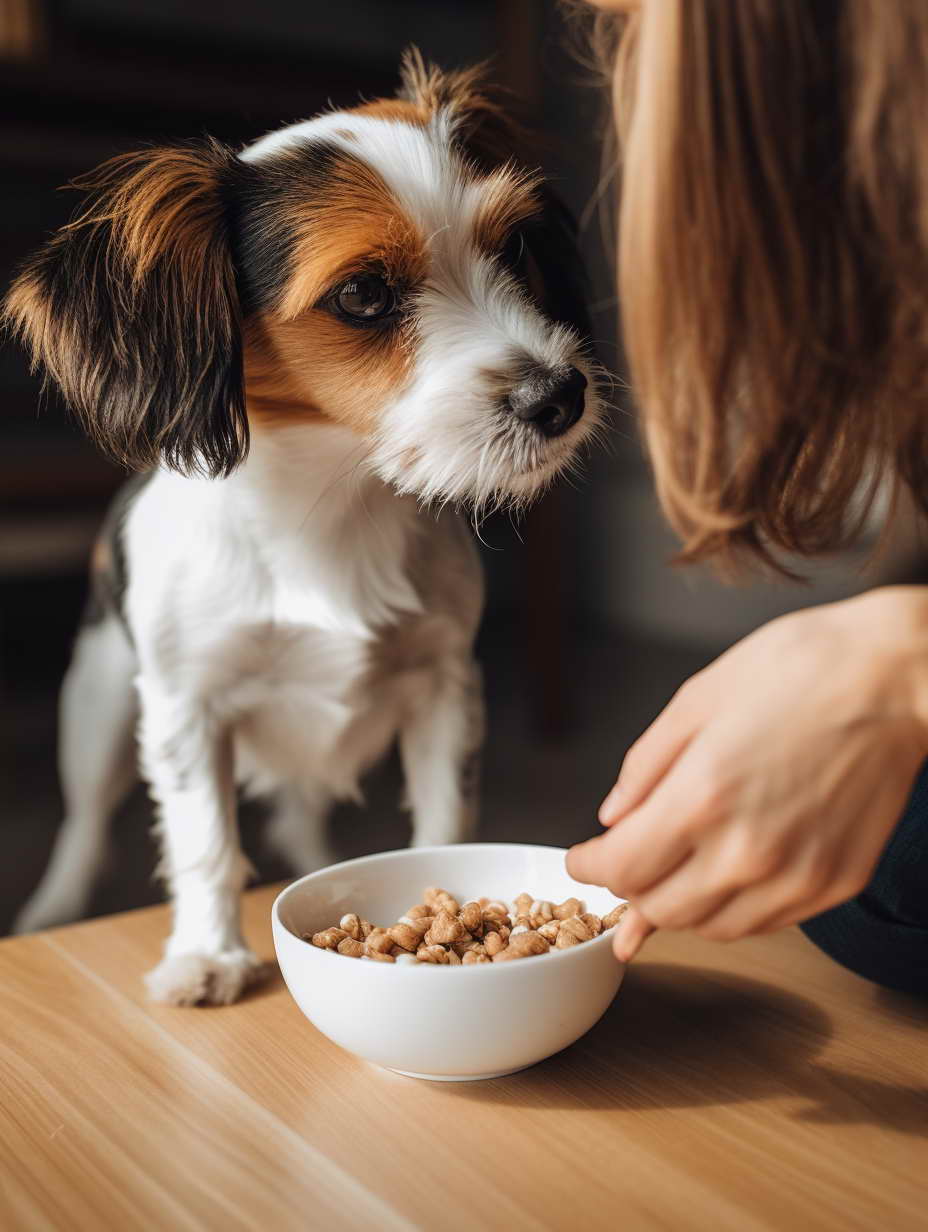How To Transition To New Dog Food: A Comprehensive Guide
Introduction
When it comes to your furry companion’s health and well-being, one crucial aspect to consider is their diet. Changing your dog’s food can be a daunting task, but it’s sometimes necessary due to dietary needs, allergies, or simply wanting to provide them with the best nutrition. In this comprehensive guide, we’ll show you how to transition to new dog food seamlessly, ensuring your pet’s health and happiness.
Getting Started
Understanding the Importance of a Smooth Transition
Transitioning to new dog food is not just about switching brands; it’s about your dog’s overall health. A sudden change can lead to digestive upset, allergies, or refusal to eat. To avoid these issues, follow these essential steps:
- Evaluate Your Dog’s Current Diet: Take note of the ingredients and nutritional content of their current food. This will help you choose a suitable replacement.
- Consult Your Vet: Before making any changes, consult your veterinarian for guidance. They can recommend the right type of food based on your dog’s age, breed, and any existing health conditions.
- Gradual Transition: Start the transition slowly by mixing the new food with the old. This will help your dog’s digestive system adapt to the change.
How To Transition To New Dog Food: A Step-by-Step Guide
Transitioning your dog to a new food requires a thoughtful and gradual approach to ensure their digestive health and overall well-being. Follow these steps to make the process as smooth as possible:
1. Consult Your Veterinarian
Before you embark on the journey of changing your dog’s food, it’s crucial to consult your veterinarian. They can provide valuable insights into your dog’s specific dietary needs based on their age, breed, size, and any existing health conditions. Your vet will recommend the most suitable type of food and guide you on how to transition effectively.
2. Evaluate Your Dog’s Current Diet
Take the time to carefully assess your dog’s current food. Note down the ingredients, nutritional content, and any specific concerns you may have, such as allergies or sensitivities. This information will serve as a reference point when selecting the new food.
3. Choose the Right Dog Food
Selecting the right food for your dog is paramount. Here are some key considerations:
- Ingredients: Look for dog food with high-quality ingredients, such as real meat as the primary protein source. Avoid products with excessive fillers, artificial additives, or by-products.
- Life Stage: Ensure that the chosen food is appropriate for your dog’s life stage (e.g., puppy, adult, senior). Different life stages have varying nutritional requirements.
- Special Needs: If your dog has specific dietary needs, such as food allergies, consult your vet for guidance. There are specialized diets designed to address these issues.
4. Gradual Transition
The transition process should be gradual to allow your dog’s digestive system to adapt. Follow these steps:
- Mixing Ratio: Start by mixing a small amount of the new food (about 25%) with your dog’s current food (75%). This initial blend should last for a few days.
- Slowly Increase New Food: Over a week or two, gradually increase the proportion of the new food while decreasing the old food. Aim for a 50/50 mix after the first few days.
- Monitor Closely: Keep a close eye on your dog during the transition. Watch for any signs of digestive upset, such as diarrhea or vomiting. If these symptoms persist, consult your vet for guidance.
- Hydration: Ensure your dog has access to clean, fresh water at all times. Proper hydration is essential during the transition.
5. Monitor Your Dog’s Response
Throughout the transition, pay close attention to your dog’s behavior and overall well-being. Look for positive signs, such as improved energy levels, a healthy coat, and regular, well-formed stools. If you notice any negative reactions or if your dog refuses to eat, consult your vet promptly.
6. Stick to the New Diet
Once the transition is complete and your dog is comfortably eating the new food, it’s essential to maintain consistency. Frequent changes in diet can lead to digestive issues. Stick to the chosen food to provide stability and optimal nutrition for your furry friend.
By following these steps and seeking guidance from your veterinarian, you can ensure a successful transition to new dog food, promoting your dog’s health and happiness. Remember that every dog is unique, so it’s essential to tailor the transition process to their specific needs and preferences.

Common FAQs
Q: How long should the transition process take?
A: The transition typically takes 7-14 days, but it may vary depending on your dog’s sensitivity. Monitor their response and adjust accordingly.
Q: Can I mix wet and dry food during the transition?
A: Yes, mixing wet and dry food can be a good strategy to make the transition more palatable for your dog.
Q: What if my dog refuses to eat the new food?
A: If your dog is stubborn, try adding a small amount of low-sodium chicken broth to the new food, or consult your vet for alternative options.
Q: Is it normal for my dog to have diarrhea during the transition?
A: Some digestive upset is common, but if it persists for more than a day or two, consult your veterinarian.
Q: Should I continue with the transition if my dog develops an allergy?
A: No, consult your vet immediately and discontinue the new food if allergies or adverse reactions occur.
Q: Can I switch back to the old food if the transition doesn’t work?
A: It’s best to consult your vet before making another change to ensure your dog’s health is not compromised.
Conclusion
Transitioning to new dog food may seem daunting, but with the right approach, you can ensure a smooth and healthy change for your beloved pet. Remember to consult your veterinarian, choose the right food, and follow the transition process gradually. By doing so, you’ll ensure your dog’s nutrition and overall well-being are in good hands.

Leave a Reply